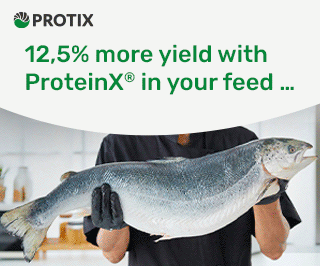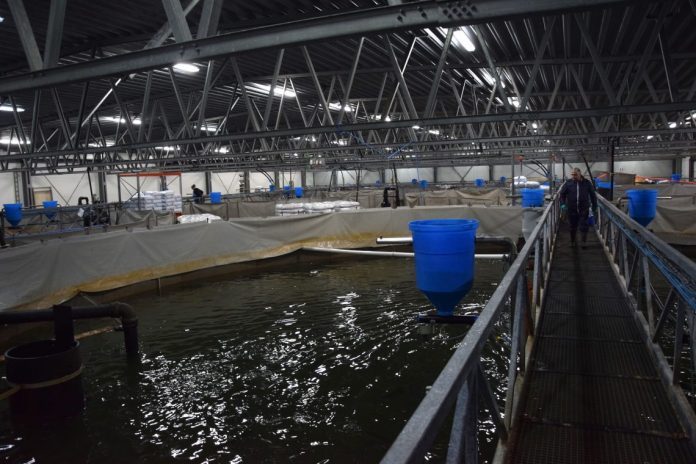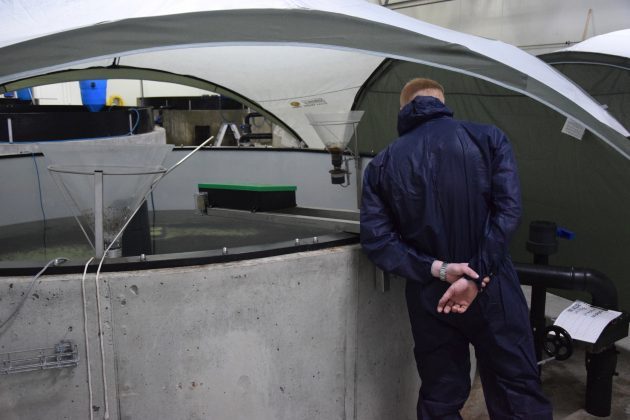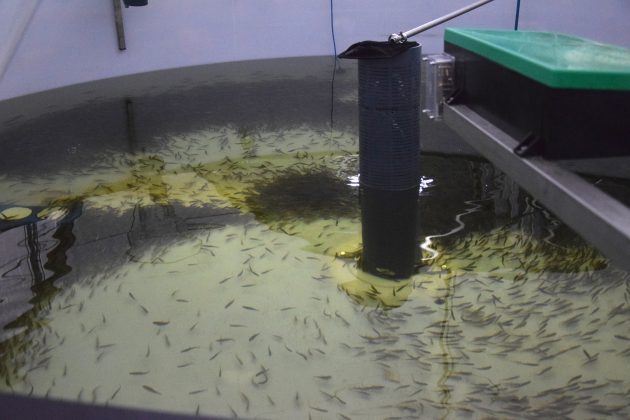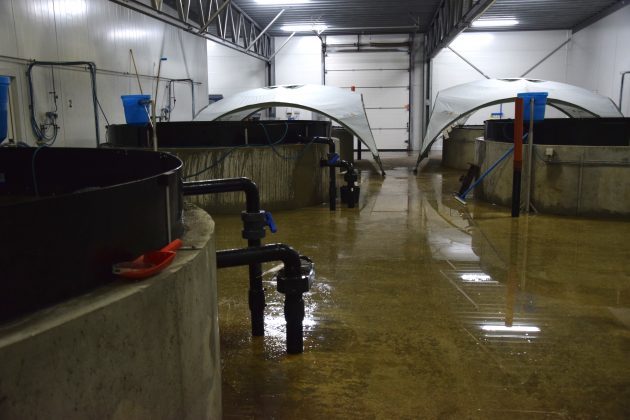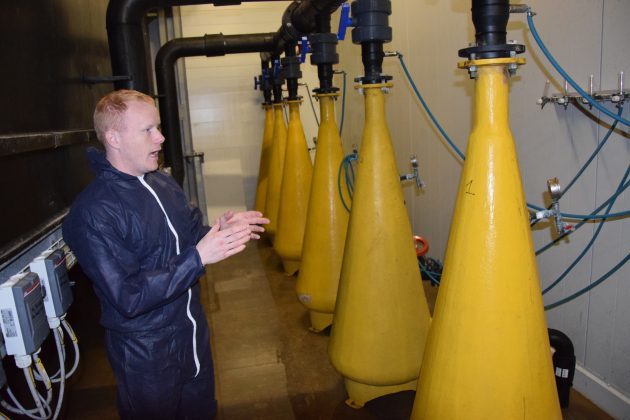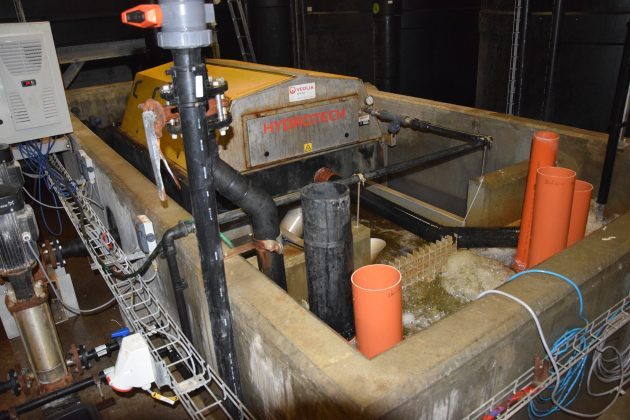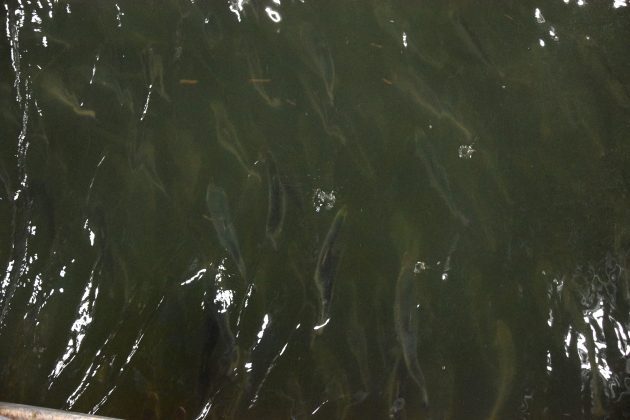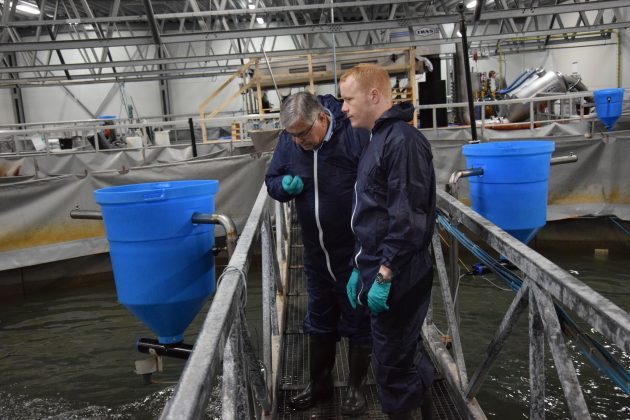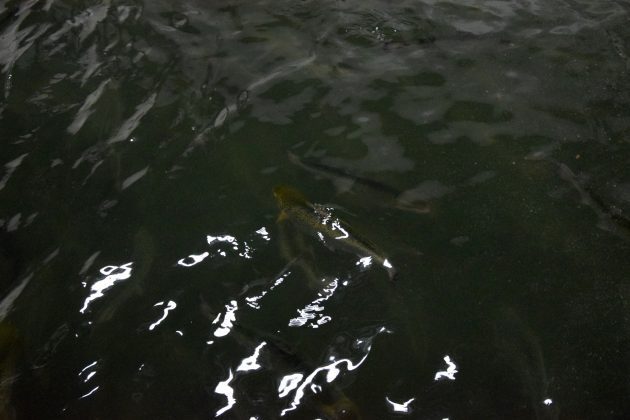After 20 successful batches, Danish Salmon believes that they have cracked the code for land-based salmon farming. Now they want to make it more economical and efficient.
Right behind Hirtshals largest tourist attraction, the North Sea Oceanarium, about one kilometer inland from the harbor, lies the land-based fish farm Danish Salmon. At Danish Salmon, nothing is a coincidence. They do everything themselves, from hatching to slaughter. Each of the 40 tanks in the RAS facility has its own oxygen supply. A necessity, according to the company.
The eggs of Danish Salmon are bought from Iceland. Every three months, 130,000 eggs are expected to become 100,000 smolts. Each smolt should grow up to a weight between 3.5 and four kilos during the turnaround time of about two years. Eleven months in fresh water, and twelve months in salt water.
Director of Danish Salmon, Kim Hieronymus Nielsen, looks over the edge of one of the two tanks, where the smallest fish stands. These are almost completely newly hatched and swim as far away as they manage when Nielsen stands by the tank. This fish protected by a tent so that they will be less exposed to light in the room.
Sorting, sorting, sorting
During production, the fish is moved eight times as it grows, from one tank to the other. An important part of the work of the employees is to sort the fish so that the fish of about the same size end up in the same tank.
In the next room, there are only four tanks. To this room, the fish is moved when it gets a little bigger.
“The smallest, the second smallest, the second largest and the largest,” said Nielsen and pointed on the tanks.
Ultimately, the smallest fish will stand about three months longer than the largest fish. This way, Danish Salmon gets even slaughter weight all the way to the end.
“We have the best smolt”
Today, Danish Salmon produces 1,200 tonnes of salmon per year in the RAS facility, a production Nielsen is pleased with.
“We have been through 20 successful batches and we have had a total of 28 batches to gain experiences from. It gets better and better every time. The smolt gets better and better, but there is a lot to learn, salmon becomes almost another species because it is so different to operate on land,” said Nielsen, and added:
“Our goal is to have the best smolt. And we think we have that.”
The freshwater department of Danish Salmon produces about 100 tonnes of smolt a year. It could have been significantly higher if they wanted to, according to Nielsen.
“It grows up to 3 percent of its own weight per day. It can grow much faster than that, but we will not let them. We do not need it, and we do not want fat smolts,” he said.
The salmon will tell you if you make a mistake
In the largest part of the facility, there are eight large tanks where they produce the largest fish. A footbridge runs above the tanks, and on the footbridge, there is a large pipe.
Through the pipe a fish rushes past, then another, then a third. The fish is sorted, then moved. Nielsen said that the key to operating well in a RAS facility is to adapt to the fish.
“If you just treat all fish equally, you will get poor results. The fish is entitled to different water quality and feeding patterns. If not, you soon discover problems, the salmon is good at telling you when you do something wrong, it just stops eating,” said Nielsen.
Temperature
Today, Danish Salmon produces in water that is twelve degrees.
“We actually started at ten degrees, now we will work for the next two years to see if we can go to more than twelve degrees, and find out what is the advantage and what is the disadvantage of it,” said Nielsen and explained:
“At higher temperatures, you can dissolve much less oxygen in the water, so you may well have 100 percent oxygen saturation, but the content of milligrams per liter drops substantially, and the fish’s parameter for feed conversion is oxygen in the water. How much it means we will find out, therefore we should take it very slowly,” he said.
One plus side they already know of will be savings on water cooling. Something that will provide savings on a cost side that at Danish Salmon is quite high.
“We have learned how to make big fish, now we will improve and make it more economical and efficient. We must cut expenses wherever possible, get the fish bigger and make as much fish as we can,” said Nielsen.

